-
 Bitcoin
Bitcoin $106,754.6083
1.33% -
 Ethereum
Ethereum $2,625.8249
3.80% -
 Tether USDt
Tether USDt $1.0001
-0.03% -
 XRP
XRP $2.1891
1.67% -
 BNB
BNB $654.5220
0.66% -
 Solana
Solana $156.9428
7.28% -
 USDC
USDC $0.9998
0.00% -
 Dogecoin
Dogecoin $0.1780
1.14% -
 TRON
TRON $0.2706
-0.16% -
 Cardano
Cardano $0.6470
2.77% -
 Hyperliquid
Hyperliquid $44.6467
10.24% -
 Sui
Sui $3.1128
3.86% -
 Bitcoin Cash
Bitcoin Cash $455.7646
3.00% -
 Chainlink
Chainlink $13.6858
4.08% -
 UNUS SED LEO
UNUS SED LEO $9.2682
0.21% -
 Avalanche
Avalanche $19.7433
3.79% -
 Stellar
Stellar $0.2616
1.64% -
 Toncoin
Toncoin $3.0222
2.19% -
 Shiba Inu
Shiba Inu $0.0...01220
1.49% -
 Hedera
Hedera $0.1580
2.75% -
 Litecoin
Litecoin $87.4964
2.29% -
 Polkadot
Polkadot $3.8958
3.05% -
 Ethena USDe
Ethena USDe $1.0000
-0.04% -
 Monero
Monero $317.2263
0.26% -
 Bitget Token
Bitget Token $4.5985
1.68% -
 Dai
Dai $0.9999
0.00% -
 Pepe
Pepe $0.0...01140
2.44% -
 Uniswap
Uniswap $7.6065
5.29% -
 Pi
Pi $0.6042
-2.00% -
 Aave
Aave $289.6343
6.02%
Is the VR indicator below 50 a signal of extreme depression? When can I ambush?
A VR indicator below 50 signals strong selling pressure and potential oversold conditions in crypto, but traders should confirm with other tools like RSI or MACD before anticipating a reversal.
Jun 16, 2025 at 11:00 am
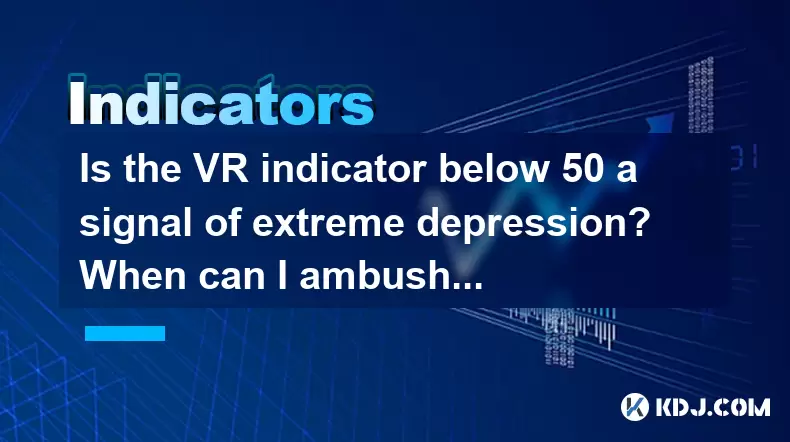
Understanding the VR Indicator and Its Significance in Cryptocurrency Trading
The VR (Volatility Ratio) is a technical analysis tool commonly used in cryptocurrency trading to assess market sentiment by comparing the volume of rising and falling prices over a specific period. Typically, the VR indicator calculates the ratio of total up-volume to down-volume over a set number of days, often 14 or 26 periods. When the VR value drops below 50, it suggests that selling pressure has significantly outweighed buying pressure, potentially signaling a state of extreme market depression.
In the context of cryptocurrencies like Bitcoin or Ethereum, where volatility is a norm, interpreting the VR indicator correctly becomes crucial for traders looking to identify oversold conditions or potential reversal points.
What Does a VR Reading Below 50 Indicate?
A VR reading below 50 indicates that more volume has been associated with downward price movements than upward ones during the analyzed period. This can imply that the market is experiencing strong bearish momentum. However, it's important not to treat this level as an automatic buy signal without further confirmation from other indicators or chart patterns.
- The VR indicator alone cannot confirm a trend reversal.
- It must be used in conjunction with other tools such as moving averages, RSI, or MACD.
- A prolonged period under 50 may suggest that market pessimism is deeply entrenched, but not necessarily that a bottom has formed.
Cryptocurrency markets are known for their sharp corrections and sudden rebounds. Therefore, while a low VR might hint at oversold conditions, it doesn't guarantee immediate recovery.
How to Determine If a Market Is Truly Oversold Using VR
To avoid false signals when using the VR indicator, follow these steps:
- Monitor how long the VR remains below 50 — a sustained period may indicate deeper weakness.
- Look for divergence between price and VR — if the price continues to fall but VR starts to rise, this could suggest weakening bearish momentum.
- Combine with RSI readings below 30 to reinforce the idea that the asset is oversold.
- Examine volume trends alongside price action; increasing volume on small bounces might suggest early accumulation.
These methods help filter out noise and increase confidence in identifying whether a VR reading below 50 truly reflects a depressed market rather than just temporary weakness.
When Can Traders Consider Ambushing a Reversal?
"Ambush" in trading refers to entering a position early in anticipation of a reversal before it’s widely recognized by the market. Timing such a move requires precision and caution, especially in crypto due to its high volatility. Here’s how to approach it:
- Watch for VR divergence — if the price makes a new low but VR does not, this is a classic bullish divergence.
- Confirm with candlestick patterns like hammer or inverted hammer formations near key support levels.
- Use volume spikes as a sign of potential institutional interest or short-term capitulation.
- Ensure that short-term moving averages (like 5-day or 10-day) begin to flatten or turn upwards.
Entering too early can result in significant losses if the downtrend continues. Therefore, even though a VR below 50 may seem tempting, waiting for additional confirmation helps reduce risk.
Practical Steps to Ambush a Potential Bullish Reversal
If you're considering setting up a trade based on a VR reading below 50, here’s a detailed guide to executing your strategy effectively:
- Identify a clear support zone where previous reversals have occurred or where Fibonacci retracement levels cluster.
- Wait for the VR to show signs of turning upwards after being below 50 for some time.
- Check for positive candlestick formations such as engulfing patterns or morning stars.
- Observe increased volume accompanying any upward movement, which supports the legitimacy of the reversal.
- Place a limit order slightly above the pattern formation to avoid chasing the price.
- Set a tight stop-loss below the recent swing low to manage risk.
- Consider scaling into the position if the price breaks key resistance levels.
This step-by-step process ensures that you’re not relying solely on the VR indicator, but instead building a robust case for a potential reversal.
FAQs
Q: What time frame is best for analyzing the VR indicator in crypto trading?
A: While the standard setting is usually 14 or 26 periods, shorter time frames like 5-minute or 15-minute charts may use smaller values. For daily charts, 14–26 periods remain effective. The key is consistency and aligning it with your trading style.
Q: Can I use VR with other oscillators like Stochastic or Williams %R?
A: Yes, combining VR with other oscillators can enhance accuracy. For example, a VR reading below 50 combined with a Stochastic crossover in oversold territory can strengthen the reversal signal.
Q: How reliable is VR in highly volatile crypto markets?
A: VR can be less stable in extremely volatile environments because volume spikes can distort readings. Always corroborate with other metrics and consider smoothing techniques like moving averages applied to the VR line.
Q: Is there a way to automate VR-based strategies in crypto trading?
A: Yes, many platforms allow integration of custom scripts or bots that can monitor VR thresholds and trigger alerts or trades based on predefined rules. However, backtesting is essential before live deployment.
Disclaimer:info@kdj.com
The information provided is not trading advice. kdj.com does not assume any responsibility for any investments made based on the information provided in this article. Cryptocurrencies are highly volatile and it is highly recommended that you invest with caution after thorough research!
If you believe that the content used on this website infringes your copyright, please contact us immediately (info@kdj.com) and we will delete it promptly.
- 2025-W Uncirculated American Gold Eagle and Dr. Vera Rubin Quarter Mark New Products
- 2025-06-13 06:25:13
- Ruvi AI (RVU) Leverages Blockchain and Artificial Intelligence to Disrupt Marketing, Entertainment, and Finance
- 2025-06-13 07:05:12
- H100 Group AB Raises 101 Million SEK (Approximately $10.6 Million) to Bolster Bitcoin Reserves
- 2025-06-13 06:25:13
- Galaxy Digital CEO Mike Novogratz Says Bitcoin Will Replace Gold and Go to $1,000,000
- 2025-06-13 06:45:13
- Trust Wallet Token (TWT) Price Drops 5.7% as RWA Integration Plans Ignite Excitement
- 2025-06-13 06:45:13
- Ethereum (ETH) Is in the Second Phase of a Three-Stage Market Cycle
- 2025-06-13 07:25:13
Related knowledge

How to confirm the effectiveness of the average price line support in the time-sharing chart?
Jun 17,2025 at 12:56am
Understanding the Time-Sharing Chart and Its RelevanceIn cryptocurrency trading, time-sharing charts play a crucial role in analyzing short-term price movements. These charts typically display price fluctuations over a specific period, often ranging from minutes to hours. Traders rely on them to make quick decisions based on real-time data. The average ...

What does it mean when the momentum indicator breaks above the zero axis?
Jun 17,2025 at 12:43am
Understanding the Momentum IndicatorThe momentum indicator is a technical analysis tool used to measure the speed or velocity of price movements in cryptocurrency markets. It helps traders identify potential trend reversals, overbought or oversold conditions, and confirms existing trends. The indicator typically oscillates around a zero line, with value...
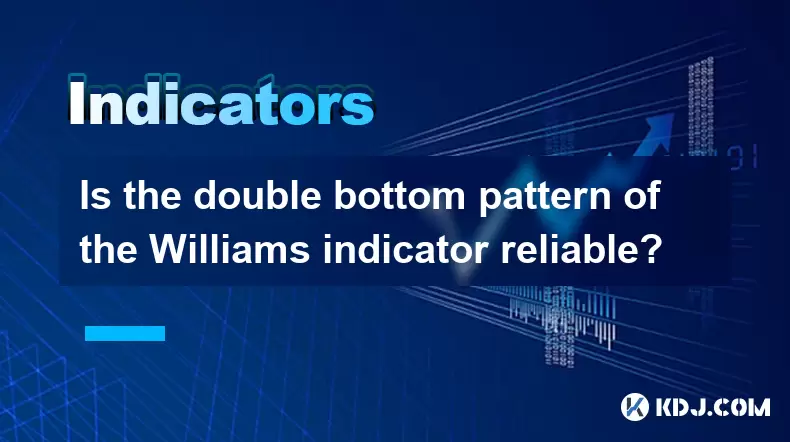
Is the double bottom pattern of the Williams indicator reliable?
Jun 17,2025 at 03:56am
Understanding the Williams Indicator and Its SignificanceThe Williams %R indicator, often referred to as Williams Percent Range, is a momentum oscillator used in technical analysis to identify overbought or oversold conditions in the market. Developed by Larry Williams, this indicator fluctuates between 0 and -100, with readings above -20 indicating ove...
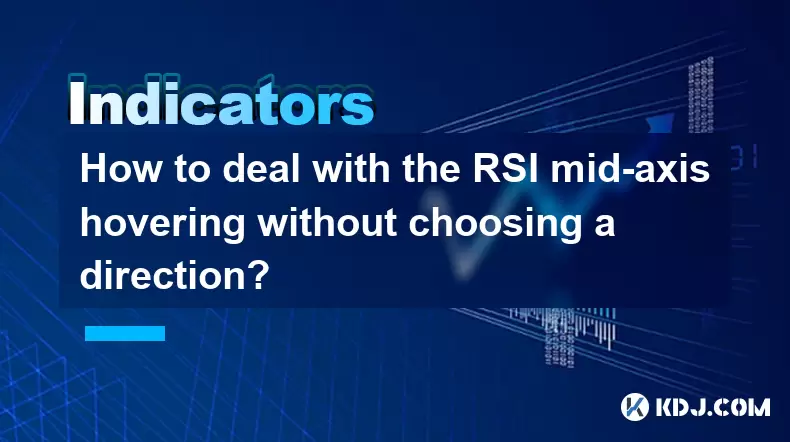
How to deal with the RSI mid-axis hovering without choosing a direction?
Jun 17,2025 at 02:02am
Understanding RSI Mid-Axis Hovering in Cryptocurrency TradingThe Relative Strength Index (RSI) is a popular momentum oscillator used by traders to assess whether an asset is overbought or oversold. In cryptocurrency markets, it's common for the RSI to hover around its mid-axis, typically at the 50 level, without showing a clear upward or downward trend....
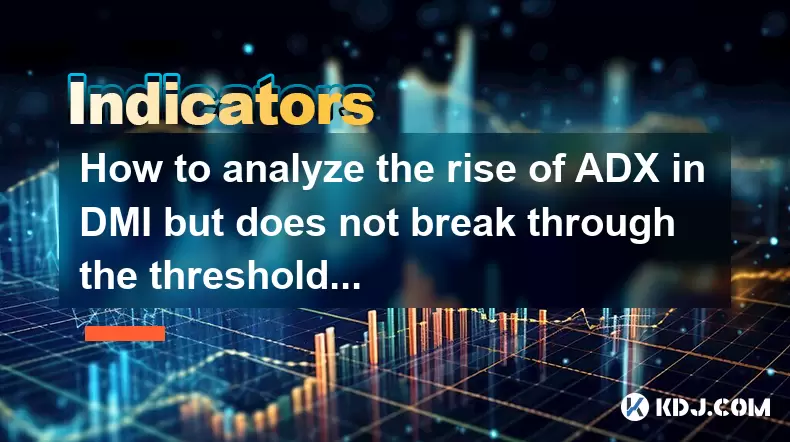
How to analyze the rise of ADX in DMI but does not break through the threshold?
Jun 16,2025 at 11:49pm
Understanding ADX and DMI in Cryptocurrency TradingIn cryptocurrency trading, ADX (Average Directional Index) is a technical indicator used to measure the strength of a trend. It works in conjunction with the DMI (Directional Movement Indicator), which includes two components: +DI (Positive Directional Indicator) and -DI (Negative Directional Indicator)...
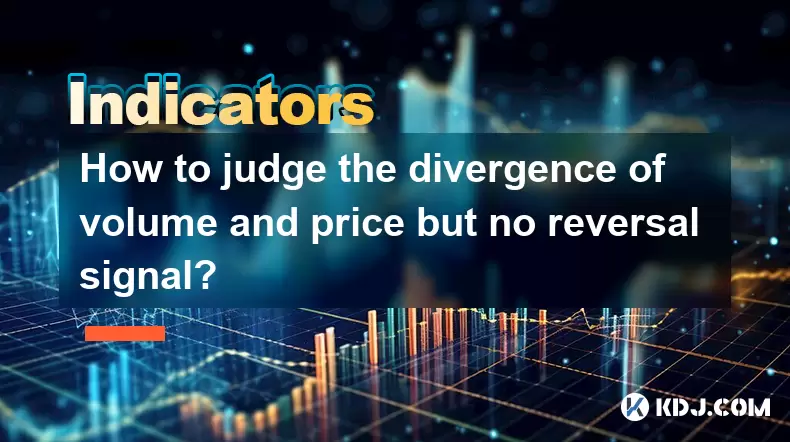
How to judge the divergence of volume and price but no reversal signal?
Jun 17,2025 at 12:28am
Understanding Volume and Price DivergenceIn the world of cryptocurrency trading, volume and price are two key indicators that traders monitor closely. Divergence occurs when these two metrics move in opposite directions. For example, if the price of a cryptocurrency is rising but its volume is declining, this could signal weakening momentum. However, it...

How to confirm the effectiveness of the average price line support in the time-sharing chart?
Jun 17,2025 at 12:56am
Understanding the Time-Sharing Chart and Its RelevanceIn cryptocurrency trading, time-sharing charts play a crucial role in analyzing short-term price movements. These charts typically display price fluctuations over a specific period, often ranging from minutes to hours. Traders rely on them to make quick decisions based on real-time data. The average ...

What does it mean when the momentum indicator breaks above the zero axis?
Jun 17,2025 at 12:43am
Understanding the Momentum IndicatorThe momentum indicator is a technical analysis tool used to measure the speed or velocity of price movements in cryptocurrency markets. It helps traders identify potential trend reversals, overbought or oversold conditions, and confirms existing trends. The indicator typically oscillates around a zero line, with value...

Is the double bottom pattern of the Williams indicator reliable?
Jun 17,2025 at 03:56am
Understanding the Williams Indicator and Its SignificanceThe Williams %R indicator, often referred to as Williams Percent Range, is a momentum oscillator used in technical analysis to identify overbought or oversold conditions in the market. Developed by Larry Williams, this indicator fluctuates between 0 and -100, with readings above -20 indicating ove...

How to deal with the RSI mid-axis hovering without choosing a direction?
Jun 17,2025 at 02:02am
Understanding RSI Mid-Axis Hovering in Cryptocurrency TradingThe Relative Strength Index (RSI) is a popular momentum oscillator used by traders to assess whether an asset is overbought or oversold. In cryptocurrency markets, it's common for the RSI to hover around its mid-axis, typically at the 50 level, without showing a clear upward or downward trend....

How to analyze the rise of ADX in DMI but does not break through the threshold?
Jun 16,2025 at 11:49pm
Understanding ADX and DMI in Cryptocurrency TradingIn cryptocurrency trading, ADX (Average Directional Index) is a technical indicator used to measure the strength of a trend. It works in conjunction with the DMI (Directional Movement Indicator), which includes two components: +DI (Positive Directional Indicator) and -DI (Negative Directional Indicator)...

How to judge the divergence of volume and price but no reversal signal?
Jun 17,2025 at 12:28am
Understanding Volume and Price DivergenceIn the world of cryptocurrency trading, volume and price are two key indicators that traders monitor closely. Divergence occurs when these two metrics move in opposite directions. For example, if the price of a cryptocurrency is rising but its volume is declining, this could signal weakening momentum. However, it...
See all articles

























































































